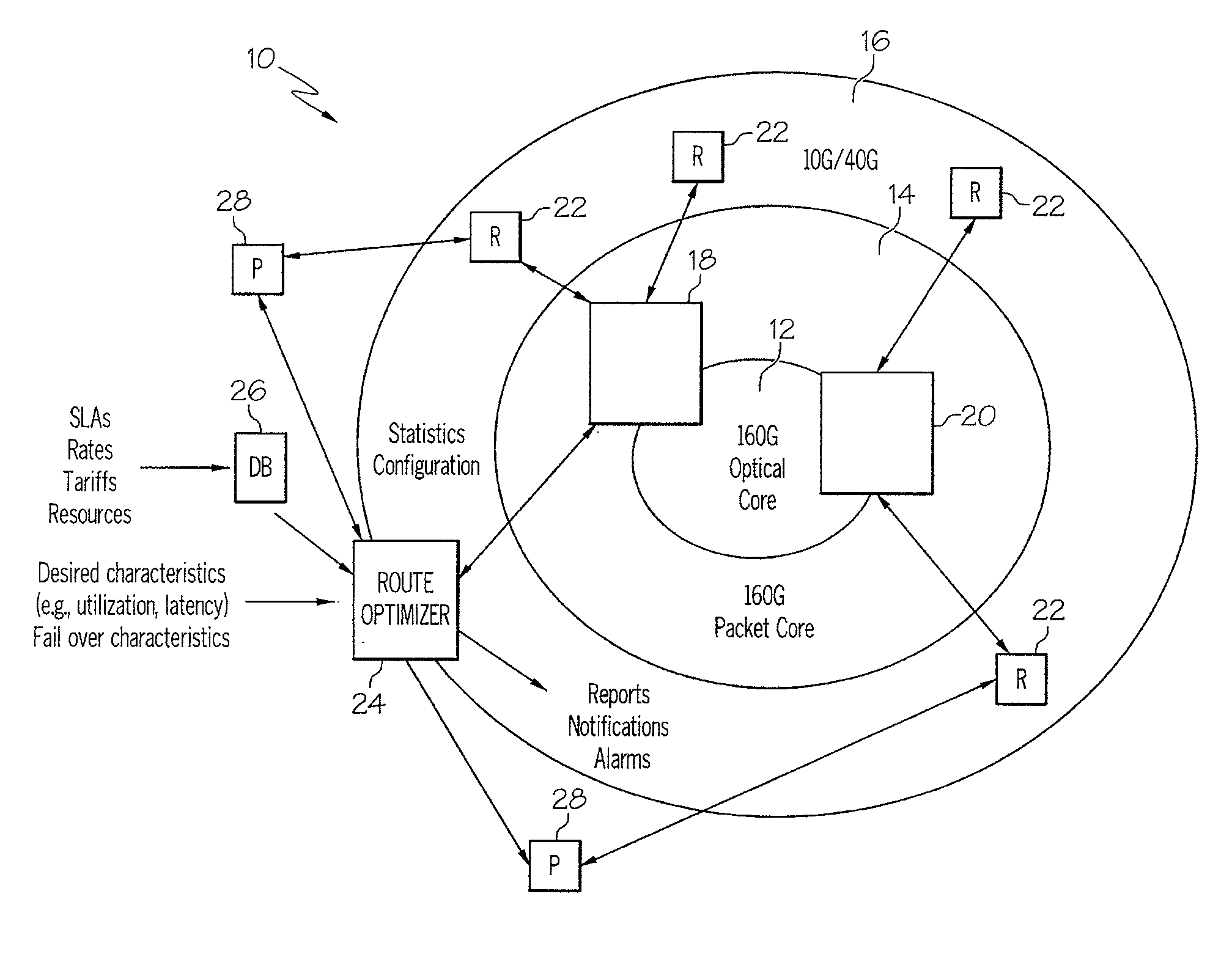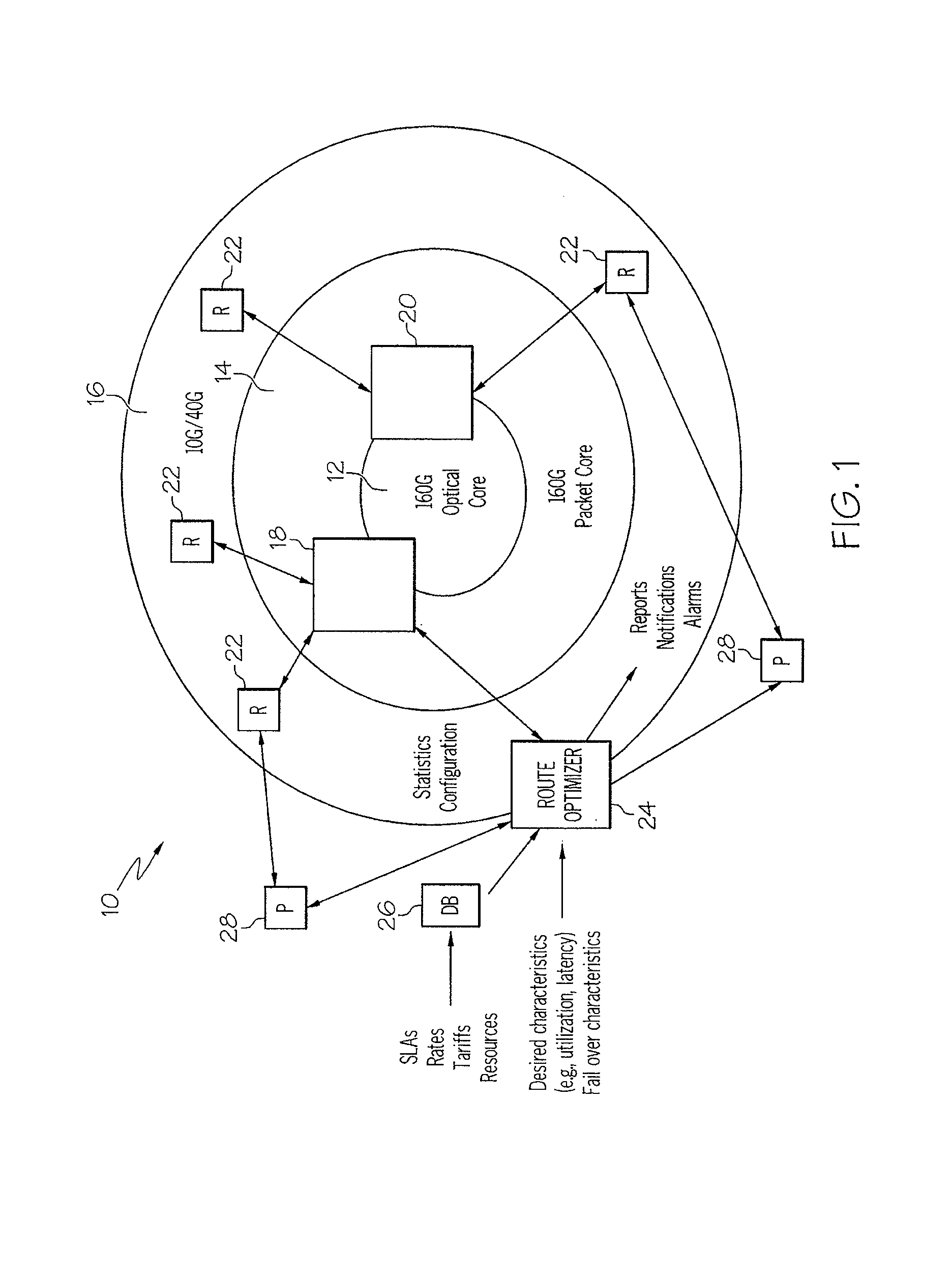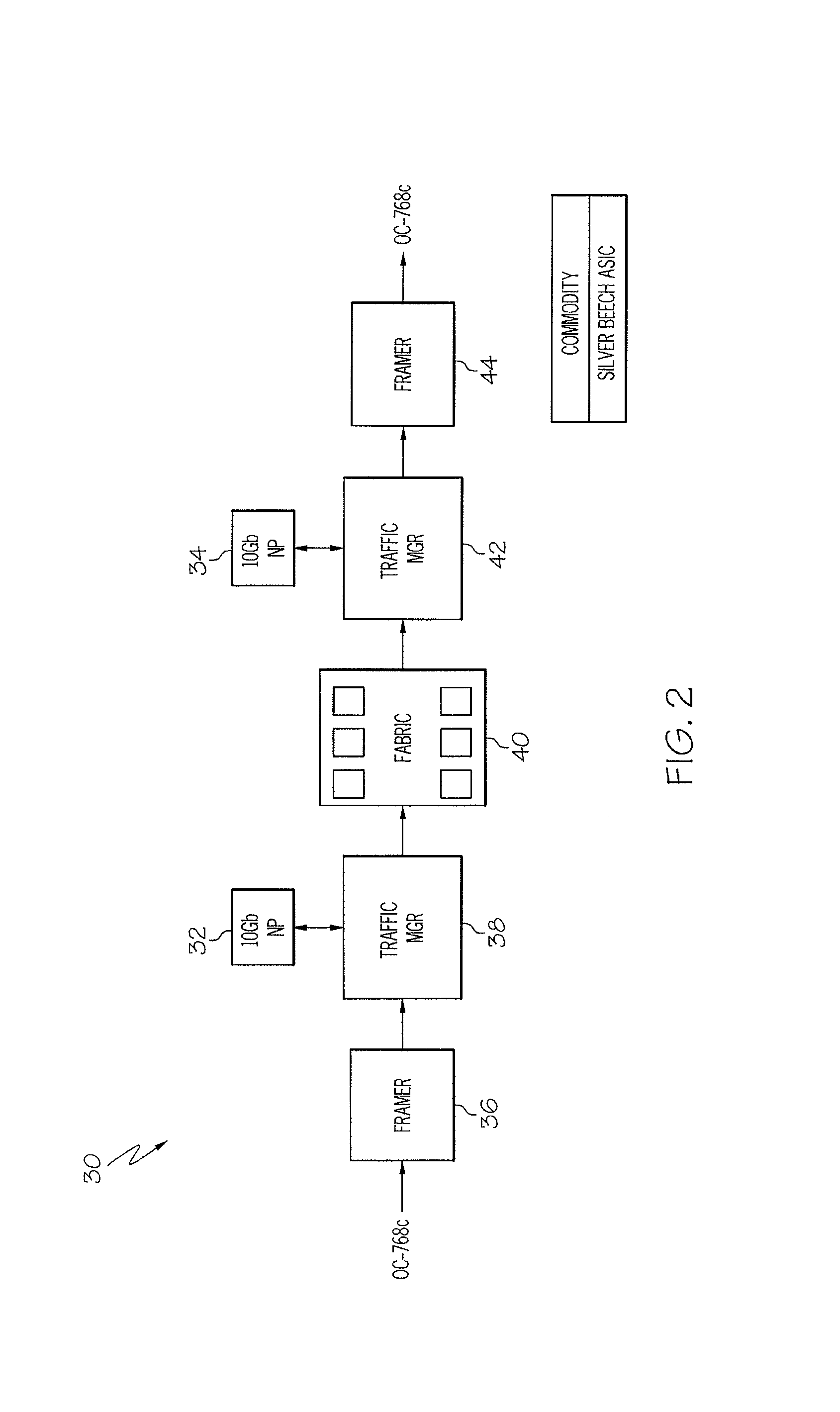System and method for transferring data on a network using a single route optimizer to define an explicit route and transfer the information related to the explicit route to a plurality of routers and a plurality of optimized routers on the network
- Summary
- Abstract
- Description
- Claims
- Application Information
AI Technical Summary
Benefits of technology
Problems solved by technology
Method used
Image
Examples
Embodiment Construction
[0018]FIG. 1 is a schematic block diagram of a digital data network 10 implemented in accordance with one embodiment of the invention. The network 10 includes an optical core 12 which can operate at 160 Gb / sec and a packet core 14 which can also operate at 160 Gb / sec. The network 10 also includes a third layer 16 which can operate at 10 Gb / sec, 40 Gb / sec or other speeds. In accordance with the invention, a pair of optimized routers or switches 18 and 20 are connected across the optical core 12. The switches 18, 20 interface with a plurality of routers 22 connected on the network 10. The switches 18, 20 are routers optimized in accordance with the invention such that they have relatively small queue size and reduced hardware complexity.
[0019]At least one of the plurality of routers 22 interfaces with a probe node 28, which interfaces with a route optimizer 24 in accordance with the invention. The probe node is described below in detail. At least one of the switches 18 interfaces with...
PUM
 Login to View More
Login to View More Abstract
Description
Claims
Application Information
 Login to View More
Login to View More - R&D
- Intellectual Property
- Life Sciences
- Materials
- Tech Scout
- Unparalleled Data Quality
- Higher Quality Content
- 60% Fewer Hallucinations
Browse by: Latest US Patents, China's latest patents, Technical Efficacy Thesaurus, Application Domain, Technology Topic, Popular Technical Reports.
© 2025 PatSnap. All rights reserved.Legal|Privacy policy|Modern Slavery Act Transparency Statement|Sitemap|About US| Contact US: help@patsnap.com



